If you’re a prepper, you are smart to focus on the fundamentals when it comes to survival. That way, no matter what you’re facing, you’ll have the most important bases covered: food, water, shelter, self-defense. We’ve all heard those before, but there’s another survival fundamental that you’ve got to account for: Communications.
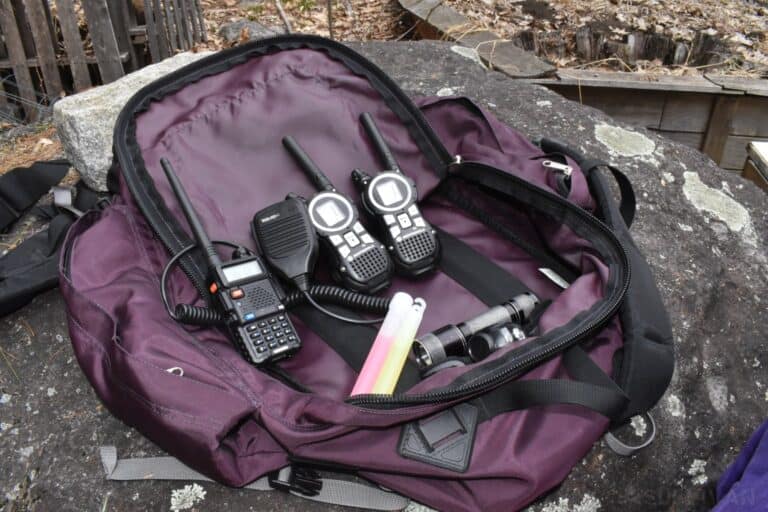
When you are in trouble and need help, need a status update on the situation, or just need to reach the people you care about and check on them or let them know that you’re okay, you’ve got to have communication gear to do it – and gear that will work under the current circumstances!
To help you stay connected and in touch, I’m bringing you a guide on the devices you should consider for your emergency comms needs.
Emergency Radio
- Pros: affordable, reliable, portable. Great way to get updates on developing emergencies or severe weather. Usually has added functionality like charging ports, flashlights, etc.
- Cons: can only receive, not transmit. Reception greatly limited by antenna.
Communications aren’t always about transmitting. Sometimes you just need to get news about what’s happening and developing situations. That’s where an emergency radio can come in.
Sometimes called survival radios, weather radios, or NOAA radios, these compact, portable units are often powered by a built-in crank dynamo so they don’t have to rely on batteries.
They also feature added functionality in the form of USB charging ports, flashlight, and things like that, giving you a multipurpose tool that has a place in every survival kit.
As mentioned, you won’t be able to reach out to anyone with this, so if that is your prerogative, you need another solution from elsewhere on this list, but you can always make a great case for keeping an emergency radio stashed.
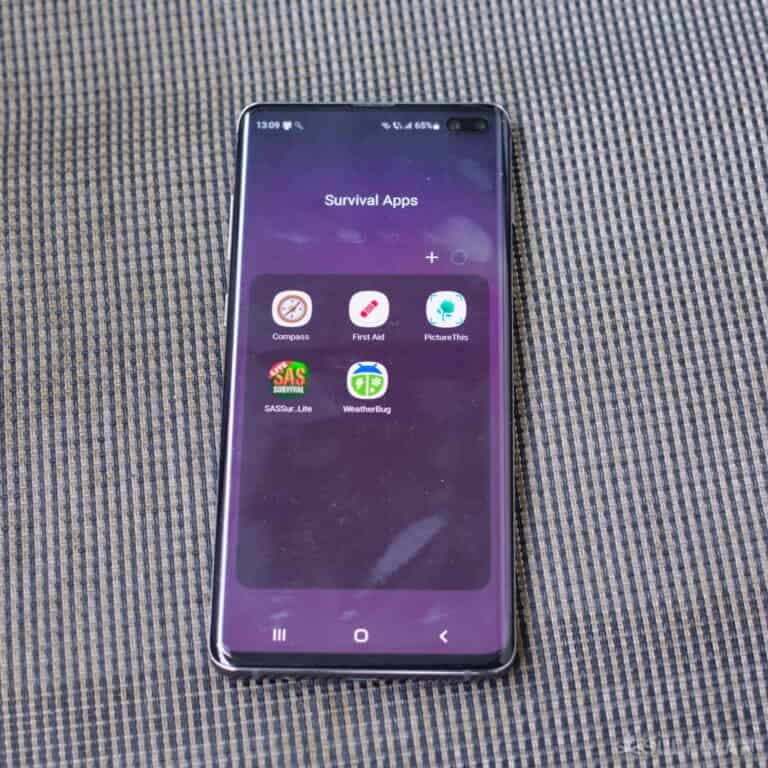
Cell Phone
- Pros: ubiquitous, extremely portable, highly versatile. Multiple modes of communication.
- Cons: tend to be power-hungry, limited by cellular network or internet connection.
This is the one emergency communications solution that virtually everyone owns these days. And with good reason! Don’t be a survival Luddite and think that your cell phone is going to give up the ghost the moment something bad happens. Chances are, that’s not true….
Cellular networks are surprisingly robust and distributed, and only a real catastrophe or something that knocks out a critical node in the network is likely to put you off the air permanently.
Even better, if you have to you can connect your cell phone to any available Wi-Fi network as a redundant backup for calls and data.
When you consider they can give you GPS capability, email, text, maps, store survival information, provide you with a backup flashlight and a whole lot more, you can make a great case for making your cell phone a mainstay in your survival kit.
Just make sure you keep a power bank and cables or a solar charging kit handy, because these things really burn through their charge during times of heavy use.
Smartwatch
- Pros: ultra-compact. Attached to your body so you’re unlikely to lose it.
- Cons: most models must be paired with a cell phone in order to place calls and provide other functionality. Standalone models are rarer and more expensive.
One of the hot pieces of tech in our current year is the smartwatch. Offering most, if not all, of the functionality of a typical smartphone right on your wrist, this is as close as it gets to living in the science fiction future as imagined by the 1980s.
The great thing about a smartwatch as an emergency communications device is that it’s attached to your body, literally strapped to you, meaning no matter what happens you’ll probably be able to access it.
If your phone has slid out of reach or you are trapped somewhere, as long as it’s got a connection to your device, you can use it to place a call or send messages.
The downside, obviously, is it needs a phone in the first place to work – unless you invest in a significantly more expensive stand-alone model that’s quite literally a tiny phone itself.
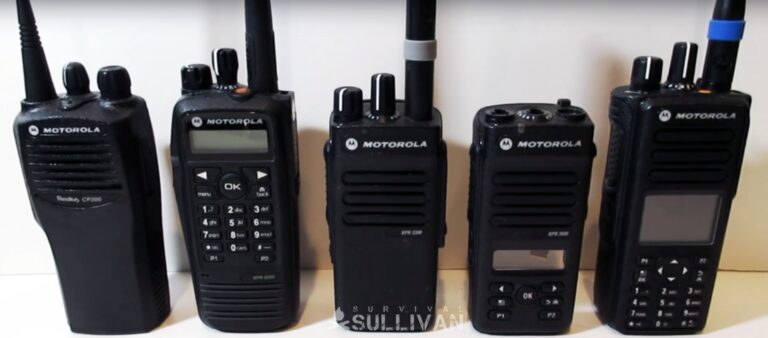
Walkie-Talkies
- Pros: extremely cheap, ubiquitous, easy to use.
- Cons: very limited range, prone to interference, gobbles batteries.
Simpler really is better, sometimes. The standard walkie-talkies you can get at any department store, or camping store can do the job of keeping you and one, two, or three people in touch over short distances.
If disaster has struck and you just need to quickly raise a few people in your neighborhood, maybe set up at different intersections watching for trespassers or rescuers, these can do the job and do it cheaply.
The downsides are just as significant as the upsides, though. You get what you pay for, and many walkie-talkies are a little better than glorified toys. Ranges are typically restricted to well under a mile in anything but the most ideal line of sight conditions.
These things also tend to chew through batteries at an alarming rate, meaning you’ll need a significant secondary investment if you want to keep them powered, and you have the additional logistical concern of rotating your batteries.
Consider these an option only if you’re sticking close to one location or conducting close-order convoy operations.
CB Radio
- Pros: good performance for the money. Can be installed in a vehicle or carried as a handheld. Easy to set up and use.
- Cons: modest range of 1 to 5 mi in good conditions. Extremely clogged airwaves thanks to limited channels.
You can’t even call yourself a trucker if you don’t have a CB radio, and if you live in some parts of the South if you don’t have one your good old boy card will be revoked on sight.
Jokes aside, CB radios have a lot going for them, mainly they have significantly better range compared to those low-end walkie-talkies, and they are versatile. You can carry them on your belt, install them in a vehicle, or have a set installed at your home.
More good news, there’s no licensing required. But that’s also kind of a downside. CB radios are affordable and popular, and they have limited channels, meaning that those airwaves in populated areas are going to be extremely cluttered with traffic.
An excellent all-around choice if you don’t need to reach out across the county or the state.
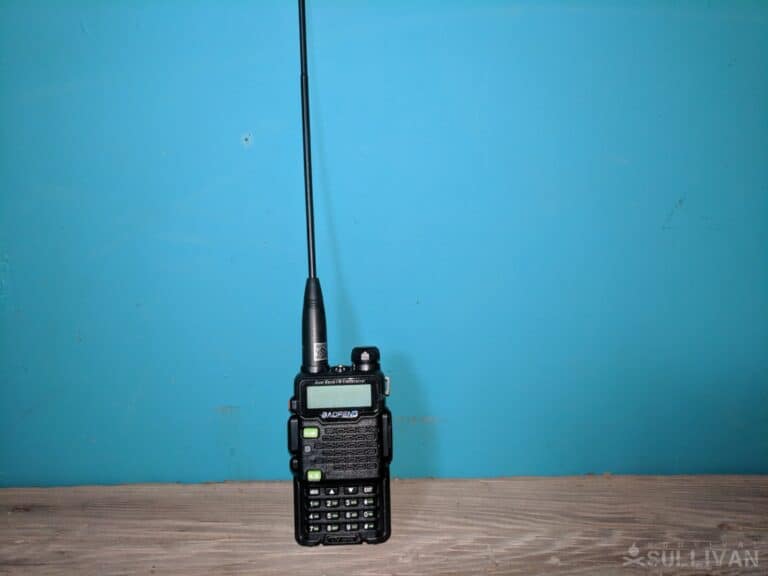
Ham Radio
- Pros: potentially excellent performance, capable of reaching across regions and nations, even around the world. Versatile.
- Cons: can be expensive, requires a legitimate skill set to maximize performance, requires licensing.
Ham radio, a term that basically means amateur radio, constitutes the next step up from CB, and what a step it is!
Ham radios can come in the form of a handheld unit, often called a handy talky to distinguish it from cheaper walkie-talkies, a powerful set installed in a vehicle or a base station that can be installed at your home or another structure…
By making use of otherwise restricted frequencies and being allowed to use far greater power compared to the other radios on our list, you can really reach out if you know your way around radio theory.
Ham operators like to have contests to see who they can talk to around the world, even up in the International Space Station!
Remarkable capability, but you’ll have to get licensed to use it legally, and you can spend a lot of money if you want a very powerful and capable “shack” of your own.
Emergency Locator Beacons
- Pros: small, very easy to use, great for getting yourself out of a jam if you are trapped or lost.
- Cons: expensive, typically requires subscription service, might not be dependable in major crises with many victims. Only advanced models can send messages.
Emergency locator beacons, sometimes called personal locator beacons or PLBs, are precisely what they sound like.
These small, typically puck-shaped devices or dongles that can clip, strap, or carabiner to your body or a piece of gear can call in the cavalry when you click the button to send a “find me” signal via satellite.
They’ll work anywhere inside the advertised service range, meaning that no matter where you go or what you’re doing, you can have the comfort of knowing that help is only a click away assuming you can survive that long.
On the other hand, they do need a subscription, tend to be expensive themselves, and you might not be able to count on them if you’re in the middle of a major disaster.
If first responders are overwhelmed and rescue vehicles committed, you might be just one of many people crying out for a savior!
GPS
- Pros: unbeatable when you need to find your way back to civilization or escape via an alternate route. Can usually send your coordinates to other receiving units or apps.
- Cons: not all models can send messages via satellite.
GPS systems have been around for a good long time now. You know them, you love them, and there’s still a good reason to have a dedicated, standalone unit.
The built-in GPS and mapping systems on our phones work great, but they don’t work as well when you start getting away from cellular networks; most rely on them at least partially for precise latitude and longitude readings.
The idea of carrying an extra gadget for navigation alone might be upsetting to some, but if you travel a lot or are planning on a vehicular bug out specifically, they are invaluable.
Nicer models can also beam out your coordinates to other units, people in your network, or even applications that can be picked up by phones, email, and so forth. Some can even send out text messages!
Satellite Phone
- Pros: excellent for establishing voice communications from anywhere in the world. Can send text and SOS messages.
- Cons: bulky, expensive, requires a monthly subscription.
Satellite phones have long been the choice of communications gear for explorers, backcountry guides, and anyone else who’s going way off the grid. No matter what’s happening, as long as your device isn’t destroyed, you can count on the satellites in orbit being safe. That means you can get in touch with whoever you need at a moment’s notice. This assumes, of course, that their own telecommunications infrastructure is intact.
Downsides are these phones tend to be pretty bulky, though they are smaller than they have ever been today, and they require a monthly subscription in order to function.
Satellite Messenger
- Pros: smaller, lighter, and cheaper than a satellite phone. Can reliably send SOS and text messages.
- Cons: no voice communication capability.
Think of a satellite messenger as a lighter, leaner, and stripped-down version of a sat phone. Just like the name suggests, these devices send messages in the form of text; they don’t receive calls.
For most of us, this is a good trade-off considering that so much of the world uses text for everything. If you want to save money on the unit itself and that monthly subscription, this can be a great option.
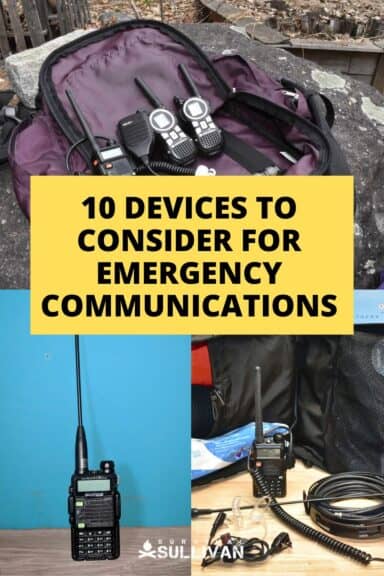

Tom Marlowe practically grew up with a gun in his hand, and has held all kinds of jobs in the gun industry: range safety, sales, instruction and consulting, Tom has the experience to help civilian shooters figure out what will work best for them.

How many on this list will NOT survive an EMP
The cost of satellite phones has come down a lot in recent years. After a little shopping around, I found a free phone with a $100/month service contract. A hundred bucks a month is nothing to sneeze at, but considering the potential value, it might be worth cutting out other expenses to make up the difference. The free phone can be close to a thousand-dollar savings.